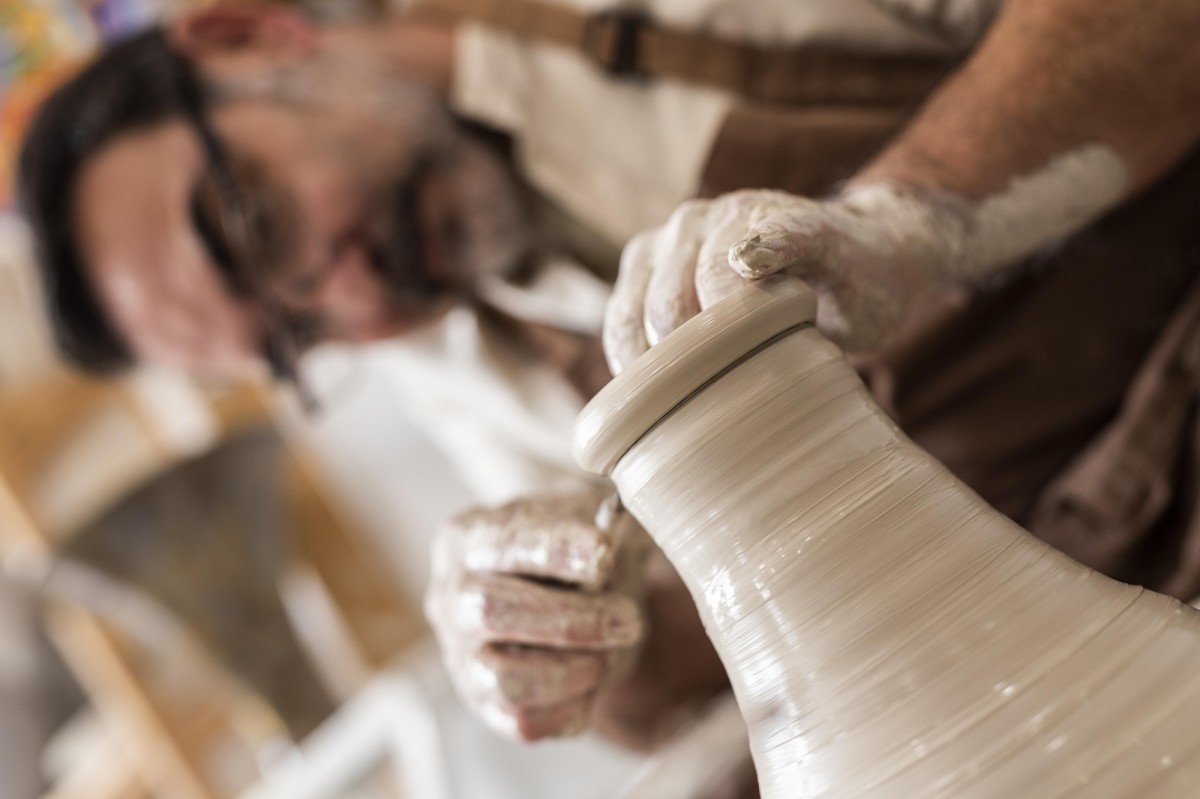
Ceramic lampshades are special products that combine decorative and lighting elements in living spaces, featuring both traditional and contemporary touches. Produced for centuries using ceramic processing techniques, these lampshades come to life today through the masterful fusion of technological innovations and artisan craftsmanship. In this article, we will delve deeply into many details—from the history of the ceramic lampshade to its production process, from the materials used to modern approaches.
Note: As the manufacturer, we would like to provide you with information about our product, the ceramic lampshade.
Table of Contents
- Introduction & History
- Production Process
- Material Selection & Preparation
- Molding & Shaping Techniques
- Firing & Glazing Processes
- Final Inspection & Packaging
- Traditional Techniques vs. Modern Approaches
- Custom Design & Personalization Options
- Challenges in Production & Proposed Solutions
- Market Trends, Sustainability & Future Vision
- Conclusion
Introduction & History
The ceramic lampshade is both a functional and decorative lighting element, characterized by aesthetic and unique designs. Throughout history, lampshades made from clay and other natural materials have been indispensable in homes, mosques, palaces, and modern living spaces. These traditionally crafted pieces catch the eye with their distinctive textures, colors, and forms.
In their earliest examples, these lighting elements were handmade, but over time the advent of technology and mass-production methods diversified their forms. Yet, handcrafted production remains vitally important in today’s market. Two examples summarize this evolution:
- Products from traditional production highlight the concept of ceramic lampshade both functionally and artistically.
- New production methods blending high technology with contemporary design have contributed to the universal use of the term lampshade.
Production Process
The production of a ceramic lampshade involves a meticulously planned sequence of stages. These stages are the key factors determining the final quality of the product.
Material Selection & Preparation
The first step in production begins with carefully selecting the materials to be used. At this stage:
- When producing a clay lampshade, the type of clay chosen is critical for both durability and aesthetics.
- Alongside natural clay, pigments and additives define the product’s color and texture.
- The workability of the material is tested to minimize risks of cracking or deformation during firing.
The materials used here also contribute to an eco-friendly product, sourcing from natural deposits for the natural lampshade.
Key Points
- Using locally sourced natural clays enhances the product’s authenticity.
- Sustainability and quality are prioritized in material selection.
Molding & Shaping Techniques
The molding stage plays a critical role in bringing the desired form of the ceramic lampshade to life. Two main methods stand out here:
Hand Shaping
Using traditional techniques, artisans shape the product by hand. This method:
- Reveals the unique texture of each piece.
- Symbolizes the concept of handmade lampshade.
- Shows the artisan’s skill in every detail.
Machine-Assisted Molding
With modern technology, this method involves:
- Designing molds using Computer-Aided Design (CAD).
- Enabling rapid production of standard-size items like the clay lampshade.
- Reducing labor costs while ensuring uniformity.
Summary of molding techniques:
- handmade lampshade: Creativity, unique texture, artisan craftsmanship.
- Machine-assisted molding: Speed, standard production, technological innovation.
Firing & Glazing Processes
The firing and glazing steps determine the final durability and aesthetics of the ceramic lampshade.
Firing Stage
The firing process is where the ceramic gains its final structure and resilience:
- Precise kiln temperature control is crucial to preserve the clay lampshade properties.
- Firing duration is adjusted based on clay type and product size.
- Controlled cooling minimizes internal stresses.
Glazing & Decorative Applications
After firing, a glaze is applied to the surface for both decorative and protective qualities:
- Various glaze finishes (matte, glossy, semi-matte) enhance the appearance.
- Decorative patterns combine handcraft and digital printing methods.
- This stage aims to give custom lampshade products a unique character.
Final Inspection & Packaging
In the last production stage, each item undergoes thorough inspection before packaging:
- Surface defects, dimensional inaccuracies, and glazing issues are checked.
- Products are verified against quality standards.
- Special packaging methods ensure safe transport to the customer.
Traditional Techniques vs. Modern Approaches
In ceramic lampshade production, traditional and modern techniques complement each other. This section compares the benefits and applications of both approaches.
Traditional Techniques
Traditional methods are defined by long-standing artisan skills:
- handmade lampshade techniques showcase unique textures and artistic expression.
- Traditional molding methods preserve the identity of the ceramic lampshade.
- Craftsmanship and manual labor are paramount in these products.
Modern Approaches
Contemporary methods leverage technology to improve product quality:
- CAD and automation boost efficiency in modern lampshade production.
- Machine-assisted molding excels in mass-producing clay lampshade models.
- This approach also enables the creation of custom design lampshades.
| Feature | Traditional Methods | Modern Methods |
|---|---|---|
| Shaping | Hand-sculpted by artisan skill | CAD molds, mass production |
| Firing | Gradual heating & slow cooling | Energy-efficient, rapid & controlled kilns |
| Decoration | Hand-applied unique patterns | Digital printing & automated glazing |
| Product Variety | Unique, artisanal pieces | Standardized clay lampshade production |
The originality of traditional methods, combined with modern techniques, produces both custom design lampshades and high-quality items.
Custom Design & Personalization Options
Today’s consumers seek products that add personal touches to their living spaces. Ceramic lampshades offer bespoke solutions in this context.
Personalized Product Options
- custom lampshade production includes color and pattern customization based on customer preferences.
- Incorporating the customer’s signature or original motifs falls under the custom design lampshade category.
Design Process Approaches
In the design phase:
- Designers analyze interior décor trends and customer expectations.
- Blending traditional techniques with modern lines merges both modern lampshade and handmade lampshade traits.
- Special molds and digital design tools allow personal touches.
Key Design Elements
- Preserving the natural color and texture of clay in clay lampshade production.
- Highlighting eco-friendly aspects in products emphasizing the natural lampshade theme.
- Special printing techniques and hand-finishing enhance uniqueness.
Challenges in Production & Proposed Solutions
Ceramic lampshade production faces technical and logistical challenges. Various solutions have been developed to overcome these issues.
Common Issues
- Material Variability: Natural variations in clay can make consistent quality difficult.
- Heat Distribution Problems: Uneven kiln temperatures can cause cracks or deformation.
- Decorative Flaws: Inconsistencies in glazing and pattern application affect visual quality.
Solution Strategies
- Quality Control: Regular testing and inspections throughout production maintain standards.
- Technological Investments: Modern kilns and automation minimize production errors.
- Training & Experience: Ongoing artisan and designer training enhances the quality of handmade lampshade processes.
Market Trends, Sustainability & Future Vision
The ceramic lampshade market continually evolves under the influence of traditional crafts and modern technology. Adapting to market trends and supporting eco-friendly production are key strategies for manufacturers.
Sustainable Production Approaches
- Using natural resources aligns production with the natural lampshade concept.
- Energy-efficient kilns and waste management techniques foster environmentally friendly practices.
Future Trends
- Emerging technologies that preserve quality alongside mass production are prominent in the clay lampshade segment.
- Rising consumer expectations drive personalization and aesthetic innovations in custom design lampshade solutions.
- The fusion of traditional and modern methods delivers unique products for both classic and contemporary tastes.
Conclusion
Ceramic lampshade production is a rich process that blends centuries of tradition, artisanal skill, and modern technology. Every stage—material selection, molding, firing, glazing, and final inspection—determines the product’s aesthetic and functional qualities. In this process:
- Careful selection of clay, the core material, directly affects clay lampshade quality.
- The fusion of traditional artistry in handmade lampshade with modern efficiency in modern lampshade production secures a unique market position.
- Bespoke solutions in custom lampshade and custom design lampshade meet specific customer demands.
- Modern techniques enhance both modern lampshade production and the consistency of clay lampshade in mass manufacture.
- Use of natural resources reinforces the natural lampshade theme while balancing aesthetics and functionality elevates overall ceramic lampshade quality.
- The marriage of traditional and modern approaches yields distinctive products for all consumer preferences.
Key Production Stages
- Material Selection: Careful choice of clay, pigments, and natural additives.
- Molding Techniques: Hand shaping and machine-assisted molding.
- Firing: Temperature control and slow cooling ensure durability.
- Glazing & Decoration: Decorative patterns and special glaze finishes.
- Final Inspection: Rigorous quality and dimension checks.
- Packaging: Secure packaging techniques for safe delivery.
Comparison Table
| Production Stage | Traditional Approach | Modern Approach |
|---|---|---|
| Shaping | Hand-sculpted craftsmanship | CAD molding & mass production |
| Firing | Gradual heating & slow cooling | Energy-efficient, fast & controlled kilns |
| Decoration | Hand-applied unique designs | Digital printing & automated glazing |
| Product Variety | Unique, artisanal pieces | Standardized clay lampshade production |
In conclusion, the expert blend of traditional methods and modern technology in ceramic lampshade production strengthens market competitiveness. Throughout this journey:
- The term ceramic lampshade conveys both its historical heritage and modern relevance.
- Quality and aesthetics in production enhance the overall perception of the word lampshade.
This article has provided a comprehensive overview of what ceramic lampshades are, how they are made, the techniques involved, market trends, and future projections.
Final Thoughts
The ceramic lampshade is a unique product that unites traditional craftsmanship with modern production techniques, offering both aesthetic appeal and functionality. Every step—from material selection to molding, firing, glazing, and final inspection—determines the quality and performance of the final piece. In this process:
- Using natural resources in clay lampshade production boosts sustainability and market strength.
- The combination of artisanal authenticity in handmade lampshade with the efficiency of modern lampshade technology delivers an exceptional experience.
- Bespoke solutions in custom lampshade and custom design lampshade set new standards in decoration.
- Modern production methods enhance both the artistry and consistency of ceramic lampshade.
- Eco-friendly practices reinforce the natural lampshade theme while balancing aesthetics and function.
- The synergy of traditional and modern techniques offers timeless products for diverse tastes.


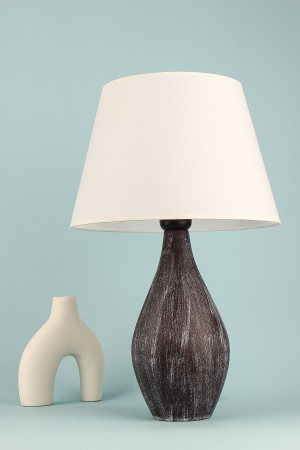
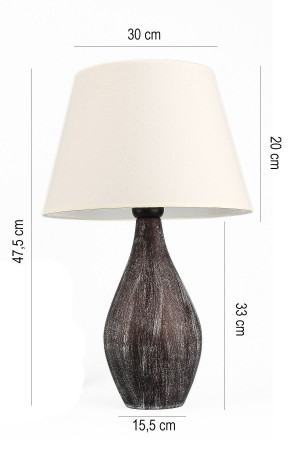
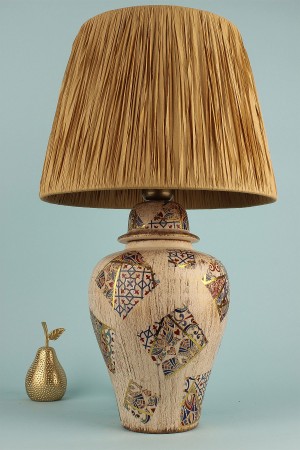
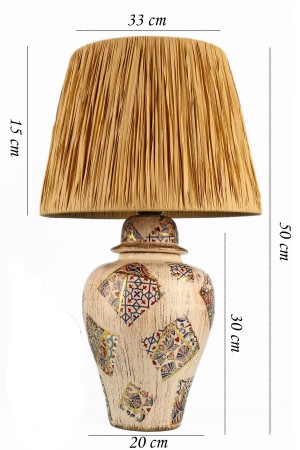
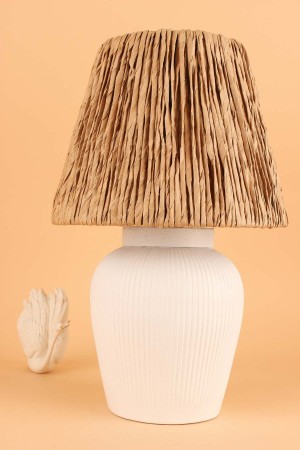
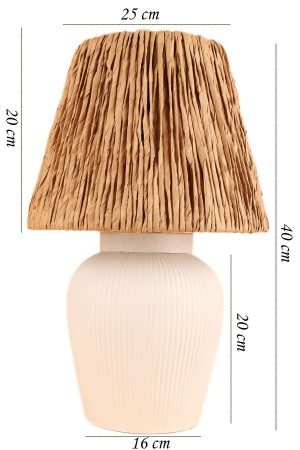


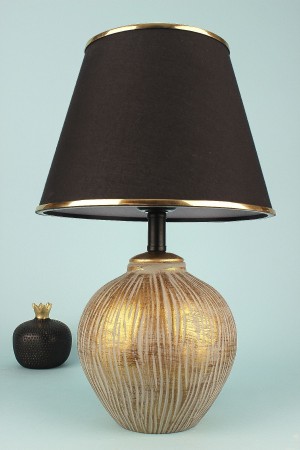

Leave a Comment